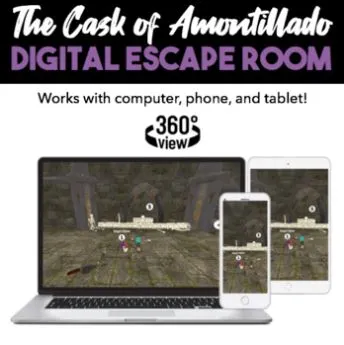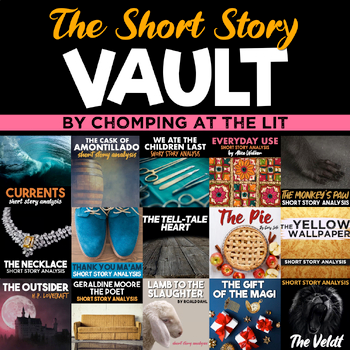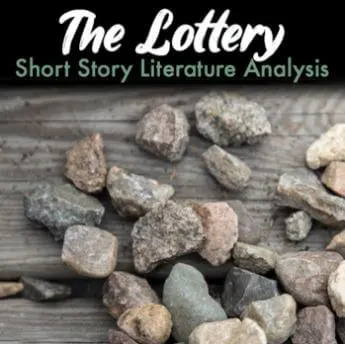There are many elements to consider when teaching point of view. Teaching this literary device can be challenging when explaining the different types of points of view and how each works to develop a story. Read on to learn how short stories can help.
Understanding point of view is essential in fully comprehending a text. And, while they say there are three sides to every story and, as it turns out, which side you are told matters – a lot. That’s why teaching point of view is critical in the ELA classroom. Once students can identify who is telling the story, they can start dissecting how they tell it, what it reveals, and why the author took that approach.
While it’s easy to stop at the general understanding of point of view, as teachers, it’s our job to ensure our students understand not only the definition of the various types of narration but also the benefits and limitations of each. Through that understanding, students can begin to recognize and appreciate a story and the author’s craft on a deeper level.
However, the question then becomes how?
Teaching Point of View Beyond the Definitions
When you’re diving into point of view with secondary students, chances are they already know the basic definitions:
- First-person: The main character tells the story through their eyes. (Keywords: I, we, and me.)
- Second-person: The author tells the story directly to the reader as if the reader is experiencing it themselves. (Keywords: you and your.)
- Third-person: The author tells the story from an outsider’s point of view. Despite being an outsider, the narrator has full – or limited – insight into the story, including one or more characters’ perspectives. (Keywords: he, she, and they.)
Once you are confident your students know the definitions above, the next steps will help put that knowledge to use. Begin by having students identify the story’s point of view. This can be done before, during, and after reading. Next, have students analyze the point of view of the story. It’s during this step that students showcase their mastery of the literary device. This is where students can understand and explain the author’s choice and the overall impact of the story’s point of view.
Looking to extend student learning? Have them employ what they’ve learned through writing. One of my favorite activities that allow students to showcase their mastery of point of view is having them rewrite a scene or story from a different point of view or character perspective.
Using Short Stories for Teaching Point of View
One of the best ways to teach point of view is through mentor texts. Mentor texts can help students understand the impact a point of view has on the story and its reader. Therefore, exposing students to numerous mentor texts with varying points of view provides clarity around more than just how to identify different points of view.
I know what you’re thinking. There’s only so much time in a day and so many days in a school year, right? Therefore, it can be tricky to find the time to introduce students to a plethora of texts.
Sure, using excerpts can show students what various points of view look like in writing. However, the problem with relying on excerpts is that it limits students’ ability to fully understand the overall impact point of view has on a story.
But that’s where the short story comes into play. While it might take weeks (or even months) to get through a novel, students can read short stories in one or two sittings. In many cases, they can be read ahead of time as homework to maximize classroom instruction. In other words, your students could work with different viewpoints in a matter of one or two weeks.
TEACHER TIP #1: TEACH THE DIFFERENCE BETWEEN POINT OF VIEW AND PERSPECTIVE
When teaching point of view, you’re bound to dive into perspective as well. However, it’s important to remind students that these two terms are not one and the same. Are they connected? Absolutely. However, this is one main difference: the point of view is who is telling the story. The perspective, on the other hand, is how they are telling the story and what it reveals about them as a character.
TEACHER TIP #2: ASK QUESTIONS TO HELP UNPACK THE IMPACT OF A STORY’S POINT OF VIEW
Students often need some prompting to explore or express their knowledge. Therefore, asking the right questions regarding points of view is the key to lively and impactful discussions. Consider asking: Who is telling the story? How are they telling it? What details are readers privy to because of this point of view? What impact does this have on your experience as a reader? On the story as a whole? Why do you think the author chose to tell the story from this point of view?
For more tips on teaching point of view, check out this post here.
The Best Short Stories For Teaching First-Person Point Of View
1. “The Cask of Amontillado” by Edgar Allen Poe, like many of his other eerie tales, is a great way to engage students in the first person point of view. Poe’s use of first-person narration is a notable example of how an author uses point of view to develop characterization and theme. While this story is about murder and revenge, it’s also about the narrator’s declining mental state. Much of the story unfolds as the reader gets inside the narrator’s mind, thanks to the first-person narration.
2. Like Poe’s stories, “The Yellow Wallpaper” by Charlotte Perkins Gilman gives readers a unique glimpse into the protagonist’s mind. Through first-person narration, students get an inside look into the woman’s thoughts, feelings, and perceptions regarding her situation, promoting sympathy as she spirals toward mental decline. It’s always fun to read Perkins Gilman’s “Why I wrote the Yellow Wallpaper” with students before asking them to unpack the motivation behind her choice of first-person narration.
3. “The Scarlet Ibis” by James Hurst is an emotional tale told from the first-person point of view. Hurst’s use of first-person narration is highly effective, allowing the reader to go on a reflective journey with the narrator as he recalls how he treated his younger brother and, ultimately, his brother’s tragic death. Without first-person narration, readers wouldn’t have the same understanding of the older brother’s grief and guilt. Therefore, this story leads to intriguing discussions about whether or not the narrator is a true villain.
4. “Sol Painting, Inc.” by Meg Medina is told from the voice of young Merci, giving readers insight into how she thinks and feels about her family and heritage and how her understanding of the people and world around her develops over the course of the story. Despite being told through Merci’s eyes, Medina skillfully reveals Merci’s older brother Roli’s perspective as well. Therefore, students can examine how Medina develops the two perspectives through each character’s words, actions, and thoughts, comparing them along the way.
The Best Short Stories For Teaching Second-Person Point Of View
5.Okay, technically, “You, Disappearing” by Alexandra Kleeman isn’t told entirely from a second-person point of view. The story begins with the first-person narrator explaining the disappearance of their cat, a sign of the slowly approaching apocalypse. However, the story then switches into second-person narration, calling out the reader as if they are the second character in the story. Kleeman’s choice of point of view helps develop the notion that, despite living through the same circumstances, people don’t necessarily experience it the same way.
6. “How to Transform an Everyday, Ordinary Hoop Court Into a Place of Higher Learning and You at the Podium” by Matt De La Peña is another great example of effective second-person narration. The title is very revealing as the story is about much more than basketball. Told by an unnamed narrator, The story takes “you” through an experience as a young Mexican-American boy the summer before his freshman year of high school. Just as the narrator learns that perseverance and determination pay off, the reader does too. In other words, the reader goes on a journey with the narrator, experiencing the trials and tribulations he does while learning life’s lessons along the way.
The Best Short Stories For Teaching Third-Person Point Of View
Students are typically most familiar with the third person point of view. However, that doesn’t mean there isn’t teaching to be done, revelations to be had, and questions to discuss. The following titles are some of my favorite for teaching third-person point of view:
7. I use “The Lottery” by Shirley Jackson for teaching many literary elements because it’s well-written and students enjoy it. With that said, it’s particularly useful for teaching point of view as the thirst person narration adds to the story’s overall effect. For starters, the third-person narrator is quite detached from the horrific events unfolding throughout the story, helping to highlight the “normalization” of the small unnamed town’s rather barbaric tradition. Rather than diving too deep into each character’s perspective, the narrator simply reveals the events and character reactions as they occur. However, as you read, the various perspectives of the characters begin to reveal themselves through their words and actions. When it all comes together, there is no denying the horrific theme of Jackson’s well-known short story: the power of tradition.
8. While “The Sniper” by Liam O’Flaherty uses third-person narration, it follows one particular perspective: that of the sniper. Therefore, it’s a great example of a limited third-person narration, closely following a specific character and giving readers a glimpse into his thoughts and feelings throughout the story. By choosing a limited third-person narration, O’Flaherty can keep the suspense building until the story’s climactic (and tragic) ending. Therefore, the story details unfold for the reader as the titular sniper experiences or realizes them himself, including the tragic ending when the dead enemy’s identity is finally revealed.
I know there are many literary elements we are responsible for teaching. At the secondary level, it’s easy to assume your students already know these terms. And you’re probably right. However, it’s important to remember that knowing a definition is far from the ability to apply knowledge. Even at the secondary level, students benefit from explicit instruction, mentor texts, and several opportunities to practice when it comes to literary elements like point of view.
With that said, if you liked this post about using short stories for teaching point of view, be sure to check out my similar posts about teaching other literary elements, from mood and tone to theme, character, and plot. If you’re looking for a general list of great short stories to teach, check out my recommendations for high school and middle school classrooms.





